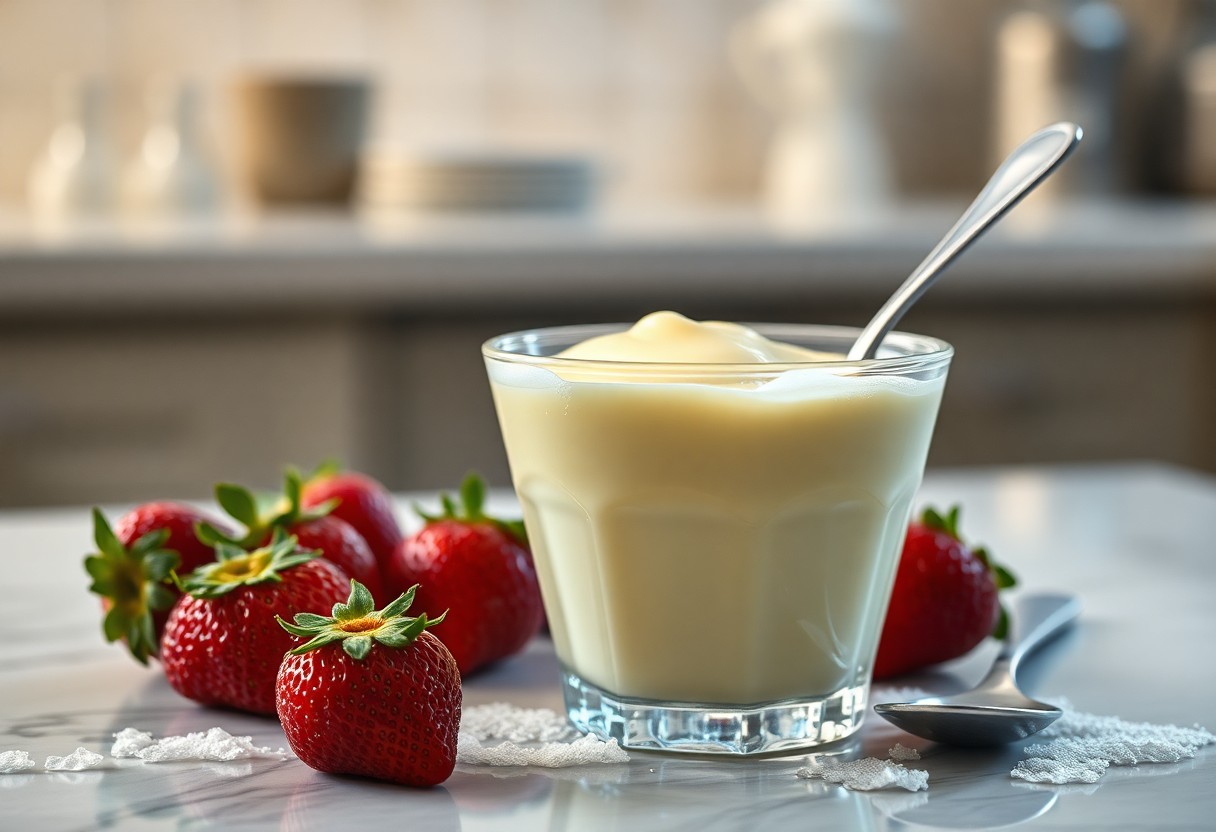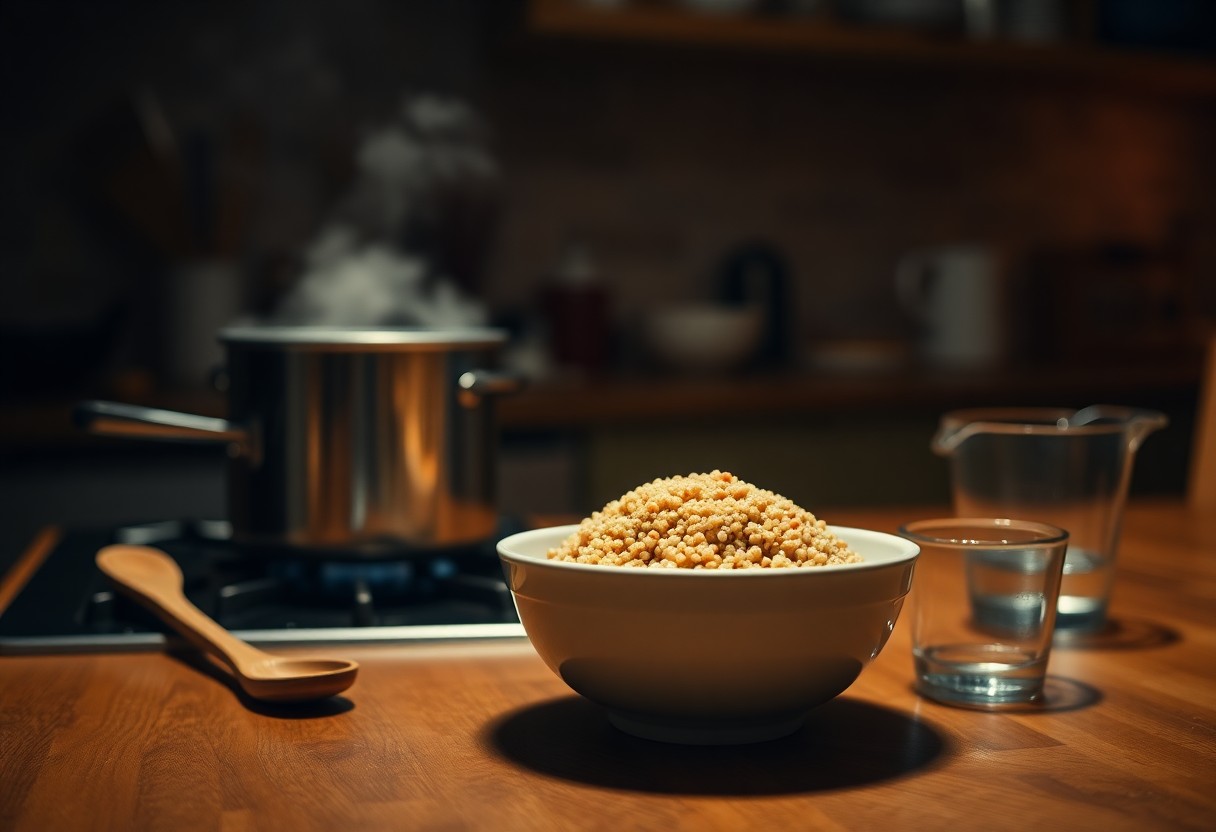Freezing pudding can be a great way to extend its shelf life and save leftovers for later enjoyment. However, you might be wondering about the effects of freezing on texture and flavor. In this post, you’ll learn how to properly freeze pudding, what types freeze best, and tips for thawing to ensure your dessert remains delicious. By the end, you’ll have the confidence to make the most of your homemade or store-bought pudding without compromising quality.
Understanding Pudding
For many, pudding is a cherished dessert, characterized by its creamy texture and sweet, comforting flavor. This versatile treat can be enjoyed warm or cold and comes in various styles, with options for both dairy and non-dairy preferences. By grasping the basics of pudding, you can create numerous delightful variations to satisfy your sweet tooth.
Types of Pudding
For those looking to explore pudding options, it’s useful to know the main categories. Here’s a brief breakdown:
- Custard Pudding
- Gelatin Pudding
- Rice Pudding
- Chocolate Pudding
- Fruit Pudding
Knowing these different types allows you to choose the perfect pudding for any occasion.
| Custard Pudding | Made with eggs and milk, giving a rich flavor. |
| Gelatin Pudding | Thickened with gelatin, often lighter in texture. |
| Rice Pudding | Combines rice with milk and sugar, sometimes flavored with cinnamon. |
| Chocolate Pudding | Features a chocolate base, loved for its indulgent taste. |
| Fruit Pudding | Incorporates pieces of fruit for added flavor and texture. |
Ingredients in Pudding
After understanding the types, you should consider the ingredients that make up your pudding. Typically, pudding contains a base of milk or cream, sugar, and a thickening agent like cornstarch or eggs. Depending on your choice, you may also add flavorings such as vanilla, chocolate, or fruit puree to enhance its taste. Different types of pudding may call for varying ingredients, providing opportunities for creativity.
The combination of these fundamental ingredients creates the smooth and luscious consistency that pudding is known for. If you are preparing pudding at home, it’s worth exploring alternative ingredients like plant-based milk, sweeteners, and flavorings to customize your pudding to suit your dietary preferences. This enables you to craft a delicious treat that aligns with your taste and nutritional goals.
Freezing Pudding: Is It Possible?
Some people wonder if it’s feasible to freeze pudding without sacrificing its quality. The answer is yes, you can freeze pudding, but it comes with considerations. While the freezing process may not ruin your pudding, you should be mindful of how it may change both texture and flavor. Understanding these factors will help you make an informed decision on whether to freeze your favorite dessert.
Effects of Freezing on Texture
Texture is one of the most noticeable changes after freezing pudding. When you thaw it, you might find that the pudding has separated or become grainy. This is due to the water content forming ice crystals during freezing, which can disrupt the smooth consistency you expect. To mitigate these effects, consider whisking the pudding after thawing to restore some creaminess.
How Freezing Affects Flavor
Possible changes in flavor are another aspect to consider when freezing pudding. While freezing generally preserves flavors, the process may dull them, making the pudding taste less vibrant after thawing. The addition of certain ingredients, such as chocolate or vanilla, can intensify this effect.
With these potential changes in mind, it’s best to taste your pudding before deciding to freeze it. If your pudding relies on fresh flavors, consider whether freezing is worth it. You might find that you prefer the taste and texture when consumed fresh rather than frozen, so weigh the pros and cons based on your preferences.

Preparing Pudding for Freezing
The key to successfully freezing pudding lies in its preparation. Start with freshly made pudding that has cooled to room temperature. To prevent ice crystals from forming, whisk in a tablespoon of cornstarch or cool-whip to help maintain its creamy texture. Carefully spoon the pudding into airtight containers or resealable freezer bags, leaving some space at the top, as it will expand when frozen. Proper sealing will ensure that your pudding stays fresh while preventing it from absorbing any other flavors in the freezer.
Best Practices for Freezing
Freezing pudding effectively involves maintaining quality and texture. It is advisable to freeze your pudding in small portions, which allows for quicker freezing and easier thawing. Aim to freeze it within two hours of preparation to lock in its freshness. To further protect your pudding, using freezer-safe containers or bags can help maintain its flavor and texture while minimizing freezer burn.
Portioning and Batching
By portioning and batching your pudding, you can enjoy your favorite dessert without the hassle of thawing the entire batch. This allows you to take out only what you need, maintaining the quality of the remaining pudding. You can use ice cube trays or small jars to create individual servings, making it convenient to use in recipes or as a quick treat. Just be sure to label the portions with the date, so you can keep track of freshness while avoiding any waste.
Due to varying freezing times, portioning helps enhance the overall freezing process. Smaller portions freeze more quickly, reducing the risk of texture changes that can arise when larger amounts are frozen. Additionally, batch freezing allows you to experiment with different flavors or ingredients, making it easier to store various pudding options for future enjoyment. It’s an excellent way to ensure you always have your favorite desserts on hand, ready to be enjoyed on a whim without a lengthy thawing process.

Thawing Frozen Pudding
Keep in mind that thawing your frozen pudding properly is vital for preserving its texture and flavor. The best way to thaw is to move it from the freezer to the refrigerator and allow it to defrost overnight. This gradual method helps prevent a watery or grainy consistency that quick thawing methods might cause.
Safe Thawing Methods
To ensure safety while thawing your pudding, always use the refrigerator method. You can also opt for a gentle microwave approach if you’re in a hurry. Just use low power settings and stir frequently to maintain an even temperature, preventing hot spots that can alter the pudding’s texture.
Tips for Maintaining Quality
With proper techniques, you can keep your pudding’s quality intact even after freezing. Here are some tips to follow:
- Thaw in the refrigerator for best results.
- Stir well after thawing to restore the original texture.
- Avoid refreezing thawed pudding as it affects taste and consistency.
This will help ensure that your pudding remains delightful and creamy.
The texture of pudding can change if not thawed with care. You want to keep the ingredients emulsified and smooth. Use these additional tips for optimal results:
- Consider adding a splash of fresh milk or cream after thawing to revitalize its creaminess.
- Store thawed pudding in an airtight container to prevent it from absorbing odors.
- Serve chilled for an enjoyable taste and texture experience.
This will enhance your enjoyment of your dessert.
Common Questions About Freezing Pudding
Now that you know you can freeze pudding, you might have some common questions about the process. This section will address a couple of important aspects, ensuring you get the most out of your frozen treats.
Can All Types of Pudding Be Frozen?
Around the types of pudding you may encounter, some fare better in the freezer than others. Here’s a quick breakdown:
| Pudding Type | Freezing Compatibility |
| Chocolate pudding | Freezes well |
| Vanilla pudding | Freezes well |
| Rice pudding | Freezes well |
| Instant pudding | May not freeze well |
| Custard-based puddings | Not recommended |
This means that while many flavors can be successfully frozen, be cautious with certain types that may not yield the best texture or taste after thawing.
How Long Can Frozen Pudding Last?
Against the backdrop of your freezer’s efficiency, frozen pudding can last quite a while. Generally, it’s best to consume it within 2 to 3 months for optimal flavor and texture.
Plus, although pudding can remain safe to eat beyond the 3-month mark, the quality might start to decline. You may notice changes in texture or flavor the longer it stays frozen. For the best experience, aim to enjoy your pudding within that advised timeframe, allowing you to savor those delicious flavors without compromise.
Alternative Storage Methods
Despite the potential for freezing pudding, there are alternative storage methods that can maintain its creamy texture and flavor. You can keep pudding fresh in your refrigerator for several days, allowing you to enjoy it at your convenience. Consider opting for these methods if you prefer to savor your pudding without the risks that come with freezing.
Refrigerator Storage
An effective way to store pudding is to place it in an airtight container in your refrigerator. This will help preserve its consistency and flavor for up to a week. Be sure to cover the surface of the pudding with plastic wrap to prevent a skin from forming.
Alternative Desserts
On occasion, you may want to switch up your dessert options if you’re concerned about storing pudding. There are many other delicious treats that can be made and enjoyed without the need for freezing.
For instance, you can consider options like mousse, custard, or even chilled parfaits, which often come with similar creamy textures and flavors. These alternatives can provide a delightful variety to your dessert repertoire while being easier to store and serve. Experimenting with these can also inspire your creativity in the kitchen, offering new tastes and presentations that elevate your dining experience.
Final Words
Hence, you can freeze pudding to extend its shelf life, but be aware that freezing may alter its texture. It’s best to choose custard-based or cooked puddings for freezing, ensuring you store them in airtight containers. When you decide to thaw your pudding, do so in the refrigerator and give it a good stir before serving. By taking these steps, you can enjoy your pudding at a later date without sacrificing too much quality.





Leave a Reply